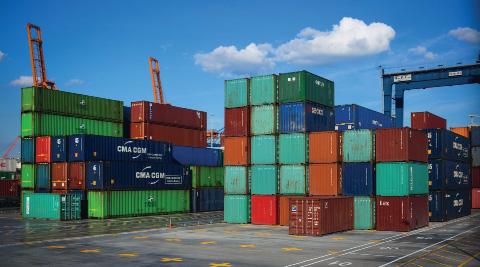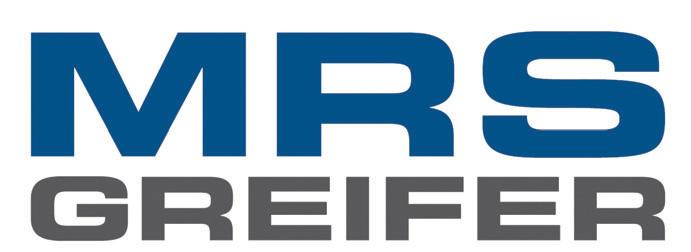
5 minute read
IoT
NEXT-GENERATION WIRELESS PORT TECHNOLOGY
Supply chain issues, trade deal delays, staff absences and freight operation diffi culties challenged port operations during the pandemic, but there is one sure way to boost effi ciency in the future writes Chris Mason at Rajant Corporation
Credit: Rajant Corporation
As the world balances and recovers, the port industry is primed for growth and continued modernisation. Supporting this view are reports such as that published by Logistics Management in 2021 showing that import values reached a record high in the US - an increase of 8.3% on the year before.
Ports worldwide are always seeking new ways to boost efficiency, improve safety and address the tightening labour market. With digitalisation, automated and smart processes are shifting ports from asset operators to service orchestrators with continuous production improvements. The Industrial Internet of Things (IIoT) notably prioritises strong connectivity to overcome the day-to-day complexities of automation and mobility, yet ports are behind the curve when it comes to other industries thus underscoring the relevance to investigate networking alternatives to enable modernised operations.
Not only has the IIoT sector emerged as a driving force of modern port innovation, but it has also facilitated smarter yard operations. This level of port connectivity has the potential to not only maximize operational efficiency and productivity but also transform port business models and everyday functionality. In fact, it was estimated that port automation can elevate levels of productivity by up to 35%. This allows operators to predict equipment health and performance, create autonomous processes, identify cargo, and deliver new services.
Unlocking innovation
The benefits of wireless connectivity are plentiful, with the most essential benefit being the sheer reliability it brings to everyday port operations. This connectivity allows operators to prioritise heavy cargo management without the threat of communication faults, or interruptions. However, large-scale movement of global goods requires more than an average network and operators need to ensure that they have the strongest network possible for this innovative technology to function as intended. Options such as Wi-Fi, LTE and 5G have limitations that the right wireless mesh network can overcome.
Ports are intensive work environments, with countless operational and security functions involved in the successful movement of cargo. Interference can be a major hindrance for attaining high-performing, continuous connectivity that allows innovative IIoT technology to perform to its full potential. Most signals cannot go around metal obstacles, such as containers.
Wireless connectivity
Port operators, consider what hinders your ability to attain Port 4.0 status. Is it downtime? Is it a lack of real-time data
8 Automated and
smart processes are shifting ports from asset operators to service orchestrators
exchange? What about unobstructed machine-to-machine (M2M) communication?
Rajant Corporation’s Kinetic Mesh technology can provide robust and mobile-enabled connectivity that ports need to capitalise on to take advantage of the opportunities of IIoT. By wirelessly connecting together, Rajant BreadCrumb radio nodes maintain hundreds of peer connections simultaneously, even while in motion and autonomously.
This means that connections don’t need to be broken for new ones to be made. By using these innovative BreadCrumbs with Rajant’s InstaMesh software protocol, the connected port infrastructure can communicate wirelessly peer-topeer, with a resilient connection. Information can be shared back and forth in a fully mobile, highly efficient web of M2M communications.
With built-in redundancy and self-optimisation, the Kinetic Mesh network removes any single point of failure and provides incoming data with hundreds of potential paths to uphold continuous mission-critical connectivity. Moreover, Kinetic Mesh is compatible with existing IIoT Wi-Fi devices and works in tandem with other networks. Its ability to maintain multiple simultaneous connections virtually eliminates downtime, with rapid scalability to hundreds of nodes that enhance network resilience.
When it comes to interference, the Kinetic Mesh is designed to remain resilient. If a path becomes blocked or interference is identified from a container, a piece of equipment, or other operations occurring throughout the portside, Rajant InstaMesh can dynamically redirect traffic over an alternative path quickly and with minimal disruption. Further, BreadCrumbs can be affixed to drones, robots and vehicles making them part of the extended on-the-move network.

8 The most
essential benefi t of wireless connectivity is the sheer reliability it brings to everyday port operations


Green port solution
The unique Kinetic Mesh has been successfully deployed in multiple port environments and a prime example of this was when it was chosen by global network provider BT to help form a wireless data backbone that could meet the needs of its partner, DP World Antwerp. Rajant’s ‘Make-Make-MakeNever-Break’ method of forming connections played a significant role in this and this ensured that no connections were broken for new ones to be made.
BT’s collaboration with Rajant was a key driver in enabling DP World’s digital transformation of its entire terminal, which handles 2.5 million containers every year, 3,000 trucks daily and almost 950 ships annually. The successful implementation of the resilient Kinetic Mesh eliminated DP World Antwerp’s interference challenges, ensuring a seamless digital and environmentally beneficial transition for its port infrastructure.
Following the Kinetic Mesh solution, DP World is now able to provide secure and resilient connectivity to more than 900 of its employees at Antwerp Gateway. Now, the operator can analyse and optimise its processes and operations, such as the movement of vehicles around the terminal. This ensures that the team at DP World Antwerp has an end-to-end view of operations, enabling timely analysis, decision making and strong management visibility.
Enabling connectivity
It is clear that as innovative IIoT technology continues to develop industry-wide, wireless mesh networks have emerged as the preferred solution for delivering missioncritical connectivity that is demanded by both large and small-scale port companies today and in the future.
If port operators are to exploit the capabilities of nextgeneration IIoT connected port technology, they must be supported by a reliable, robust and secure wireless mesh network that enables this technology to perform to its full capacity. By implementing this successfully, a port environment can benefit from more autonomy in everyday operations, cutting costs, time and logistical planning.

Credit: Rajant Corporation 8 Most signals
cannot go around metal obstacles, such as containers

OUR EXPERIENCE –YOUR ADVANTAGE
The perfect grabs with unbeatable reliability, leading in efficiency and quality, expedient and economical. Rope-, Motor-, Hydraulic-Grabs
MRS GREIFER GmbH
Talweg 15-17 • 74921 Helmstadt • Germany Tel: +49 7263 912 90 • Fax: +49 7263 912 912 export@mrs-greifer.de • www.mrs-greifer.de







